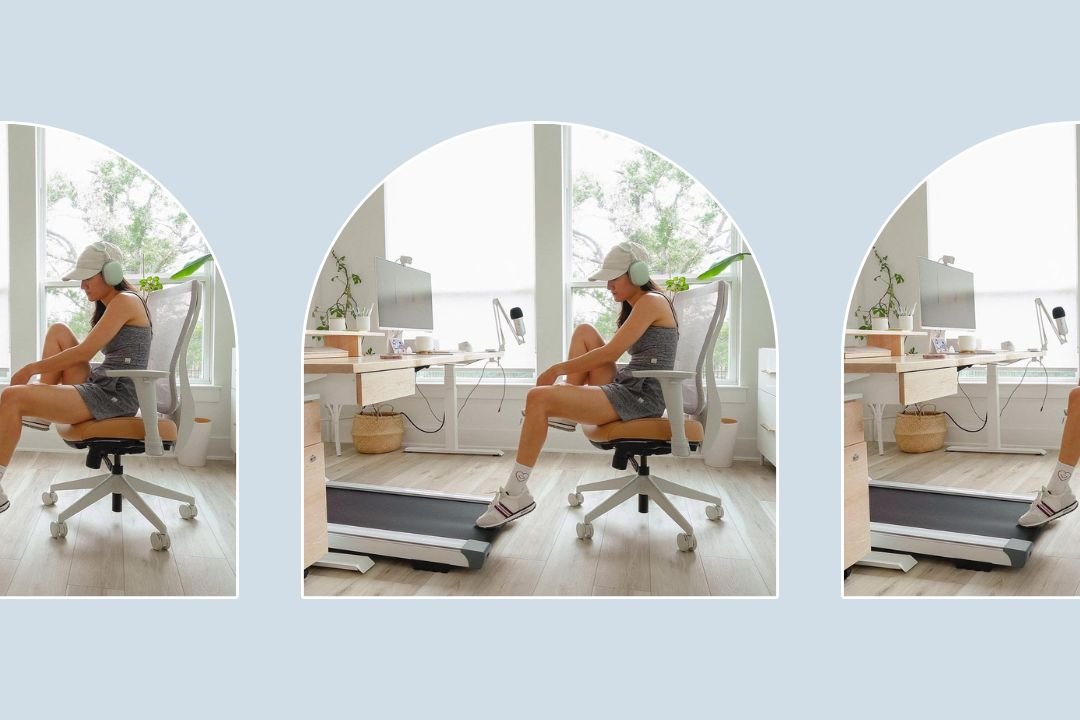Once upon a time, I effortlessly logged 10,000 steps a day without a second thought. My daily routine involved walking my dogs in the morning, taking short strolls during work breaks, attending post-workout classes, and generally staying active throughout the week. Then came the game-changer: COVID-19. Suddenly, my world shrank to a 900-square-foot apartment, and my longest walk became a mere shuffle from my bed to the kitchen and back. The easy 10,000 steps turned into a meager 2,000, occasionally reaching 3,000 on a good day.
What was initially an eight-week work-from-home stint soon transformed into a more permanent arrangement. I want to make it clear that I adore working from home; it boosts my productivity, comfort, and overall happiness compared to my days in an office. The only downside was the dramatic drop in my daily physical activity. Eventually, my lively, on-the-move lifestyle gave way to sluggishness, and my body felt the difference. I lost flexibility, strength, and mobility, making me feel older than I actually was. When I finally decided to do something about it, TikTok had a solution, as it often does. The answer? A standing desk combined with an under-desk treadmill, which revolutionized my work-from-home (WFH) life.
The moment I searched “under desk treadmill” on Amazon, I began seeing TikToks featuring women striding through their workdays. I wanted to be like them, so I convinced my husband that investing in the equipment would be worthwhile. While I initially thought I’d match their pace right away, the reality was different. I didn’t immediately start racking up steps. Instead, I slowly integrated walking at my desk into my daily routine. Gradually, I began to experience the benefits of adding a bit more activity to my day. We all have to start somewhere, right?
So, if you’re like me and adore working from home but also want to incorporate more physical activity, an under-desk treadmill might not transform you overnight. However, it will certainly help. Need proof? Here’s how using an under-desk treadmill for one month improved my mental and physical health, as well as my performance and productivity at work.
My Setup
While I’m all for an aesthetically pleasing home office, fully embracing an ergonomic lifestyle requires a bit of style sacrifice. Still, I’m too fond of beautiful things to completely undermine my home office vibe. So, I searched diligently for the perfect desk and walking pad for my office. Here’s what I chose:
AMAZON | WALKINGPAD – Foldable Walking Pad
Large treadmills aren’t exactly the most aesthetically pleasing office additions, but the goal here isn’t to look pretty; it’s to sneak more movement into your day. This foldable white treadmill is sleek enough to tuck into a corner or leave under your desk when not in use, making it less of an eyesore. Plus, it’s one of the most affordable options available. I haven’t regretted this purchase once.
FLEXISPOT – Standing Desk
This sleek, unobtrusive desk is a marvel of utility packed into a compact frame. The programmable height settings, USB charging ports, and storage drawer are significant upgrades over my old desk.
FITBIT – Versa Smartwatch
I started using a Fitbit in 2018 and haven’t gone without one since. It allows me to track data from my workouts, such as steps, calories, and heart rate zones, helping me work toward my fitness goals and stay on track. Over time, I’ve been able to see how far I’ve come in terms of overall fitness, providing a substantial motivational boost when I feel stuck in a rut.
Week 1
On the first day, I went all-in and walked for a full hour. I found it easy to fit in during meetings where I was more of a listener than a speaker. However, that level of intensity lasted only one day. For the rest of the week, I walked for about 30-40 minutes during meetings each day. Surprisingly, this still added a significant number of steps that I wasn’t getting before. Even better, walking made those meetings fly by. I felt more energized throughout the day, and midday slumps became a thing of the past. It turns out that moving your body can indeed make you feel better.
However, this week faced a minor setback on Thursday when a migraine hit. I couldn’t bring myself to stand, let alone go for a walk. I had initially set an ambitious goal to walk every single day during the week, but this week served as a reminder of two important things: building a habit takes time, and I need to give myself grace.
Week 2
After observing how people used their walking pads on TikTok, I decided to make a key change to my routine: I wore my Fitbit on my ankle instead of my wrist to track my steps more accurately. This was essential because I noticed that my Fitbit wasn’t tracking any steps while typing or using the mouse. I love it when my Fitbit congratulates me for reaching my daily goal; it’s genuinely motivating. Fortunately, the Fitbit-on-the-ankle trick worked wonders, even if it looked a bit odd.
However, a new challenge arose this week. I discovered that walking and working simultaneously was easier said than done. Typing and walking came easily, but using a mouse was almost impossible. Any tasks that required lots of clicking (hello, Excel) had to be done while sitting. Nonetheless, I found that walking while reading, writing, or answering emails made those tasks breeze by, and my focus improved. Working and walking in tandem boosted my productivity, making this week a remarkable experience.
Week 3
By this point, I had fully adjusted to my new routine and eagerly looked forward to my daily walks. I designated my walking periods for meetings and tasks that didn’t involve extensive computer work, like reading story submissions and going through emails. I usually reserved these walks for midday when I felt the energy slump approaching.
Rather than remaining glued to my desk while watching time tick by, switching between sitting and walking instantly revitalized me. It provided an energy boost, and before I knew it, that work period was over. My body was no longer getting winded after 30 minutes of walking. I felt more mobile and healthier, and these small adjustments had made a big difference in my routine.
Week 4
By week four, walking was as integral to my daily routine as letting my dogs out in the morning. I walked every day as soon as the clock struck 11 a.m. However, on one Wednesday, I wasn’t up for it. Instead of chastising myself, I recalled the lesson from the first week: It’s okay to take a day off when my body needs it.
Physically, the changes I experienced were more about how I felt than how I looked. I was more flexible, less tense, and my mind felt clear. My work had improved, and this was the most surprising benefit of all. I had anticipated better health, but I didn’t expect my productivity to soar. Walking during specific tasks made them go by faster, and while I may not walk every single day going forward, I am pleased with the equipment investment. Incorporating movement into my day has never been easier, making it a perfect addition to my regular workout routine. It was a 10/10 experience, and I believe everyone who works from home should consider trying it.










